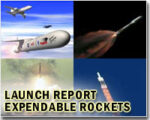At the biennial Partner 2025 defense exhibition in Belgrade, Serbia — held from September 24–27 — China, Iran and the United Arab Emirates (UAE) made notable appearances with a range of military platforms aimed at expanding their export portfolios. The event served as a strategic venue for emerging suppliers to pitch their technologies to Balkan and Global South customers amid shifting geopolitical alignments and increasing demand for affordable alternatives to Western systems.
China Showcases Norinco’s Export-Oriented Armored Vehicles
China’s defense giant Norinco (China North Industries Corporation) presented several land combat platforms tailored for export markets. Among the highlights was the VN22D 6×6 wheeled armored vehicle — an amphibious infantry fighting vehicle (IFV) that features modular armor protection and a remote-controlled turret. The VN22D is designed for rapid deployment forces and offers STANAG Level 4 protection against kinetic threats.
Another platform on display was the VT4 main battle tank (MBT), already exported to Thailand and Nigeria. The VT4 incorporates a 125 mm smoothbore gun with autoloader system and composite armor with explosive reactive armor (ERA). Norinco also exhibited its SH15 155 mm self-propelled howitzer mounted on a truck chassis — a system that has seen growing interest from countries seeking mobile artillery solutions without the logistics burden of tracked platforms.
Chinese exhibitors emphasized affordability and rapid delivery timelines as key selling points. Their presence in Belgrade reflects Beijing’s ongoing effort to deepen military-industrial ties with non-NATO countries in Eastern Europe and Africa.
Iran Pushes Loitering Munitions and Tactical UAVs
Iranian defense firms used Partner 2025 to promote indigenously developed unmanned systems aimed at asymmetric warfare scenarios. The Defense Industries Organization (DIO) displayed several loitering munitions including variants of the Shahed-136 — widely known for its use by Russia in Ukraine under rebranded designations like Geran-2.
The Iranian booth also featured tactical UAVs such as the Ababil-3 reconnaissance drone and Raad-85 suicide drone. These systems are low-cost but effective tools for saturating enemy air defenses or conducting ISR missions in contested environments. While Tehran faces international sanctions restricting formal arms exports under UNSCR frameworks, it continues to market dual-use technologies through regional partnerships or proxy channels.
The presence of Iranian systems at a European venue signals Tehran’s intent to normalize its defense industry footprint beyond traditional partners like Syria or Venezuela. Serbian authorities did not comment on whether any formal procurement discussions took place during the event.
UAE’s EDGE Group Highlights Modular Loitering Munitions
The UAE’s state-owned EDGE Group presented several products from its HALCON subsidiary specializing in precision-guided munitions. Chief among them was the Hunter series of tube-launched loitering munitions — including Hunter-2S and Hunter-10 variants — designed for tactical use against soft-skinned targets or light armor.
- Hunter-2S: Features electric propulsion with an endurance of up to 45 minutes; equipped with EO/IR seeker head; range ~30 km.
- Hunter-10: Larger payload capacity; intended for higher-value targets; modular warhead options including HE-FRAG or shaped charge variants.
The modularity of EDGE’s loitering munition line is intended to offer scalability across different mission profiles while maintaining cost-effectiveness compared to Western analogues like AeroVironment’s Switchblade series or Israel’s Hero series by UVision.
This marks one of EDGE’s first major appearances at a European defense expo outside IDEX or Eurosatory circuits — signaling Abu Dhabi’s ambition to penetrate new markets amid growing competition from Turkish drone manufacturers like Baykar or STM.
Balkan Interest Grows Amid Strategic Realignment
The choice of Belgrade as host city reflects Serbia’s balancing act between East and West. While formally pursuing EU accession talks, Serbia maintains close ties with Russia and China — both politically and militarily. Its recent procurement of Chinese FK-3 air defense systems (export variant of HQ-22) underscores this dual-track policy.
Balkan nations face constrained budgets yet rising security concerns due to regional instability (e.g., Kosovo tensions), NATO-Russia friction over Ukraine, and migration-linked border control issues. This makes affordable ISR drones, anti-drone systems, mobile artillery units and armored vehicles particularly attractive segments for exhibitors targeting this region.
No major contracts were announced during Partner 2025; however informal discussions reportedly occurred between Chinese vendors and delegations from North Macedonia and Bosnia-Herzegovina regarding UAV surveillance packages tailored for border monitoring roles.
Geopolitical Implications of Non-Western Defense Outreach
The combined presence of Chinese state-owned enterprises (SOEs), Iranian sanctioned entities, and Emirati conglomerates illustrates an emerging multi-polarity in global arms trade dynamics. As Western OEMs face political restrictions on exports to certain regimes or struggle with production backlogs due to Ukraine-related demand surges, alternative suppliers are stepping into gaps — often offering less regulated terms-of-sale frameworks.
This trend is particularly visible in unmanned aerial systems (UAS), where cost-effective solutions from Iran or China have found clients across Africa (e.g., Ethiopia), Latin America (e.g., Venezuela), Central Asia (e.g., Tajikistan), as well as Middle East conflict zones via proxy networks. The UAE’s EDGE Group seeks legitimacy through innovation rather than price competition alone but must navigate scrutiny over end-user controls given past controversies involving Libyan deployments.
If current trajectories hold, future editions of Partner may see deeper participation from Global South exporters while traditional NATO suppliers recalibrate their regional strategies amid tightening compliance regimes under ITAR/EAR frameworks or EU Common Position guidelines on arms exports.









